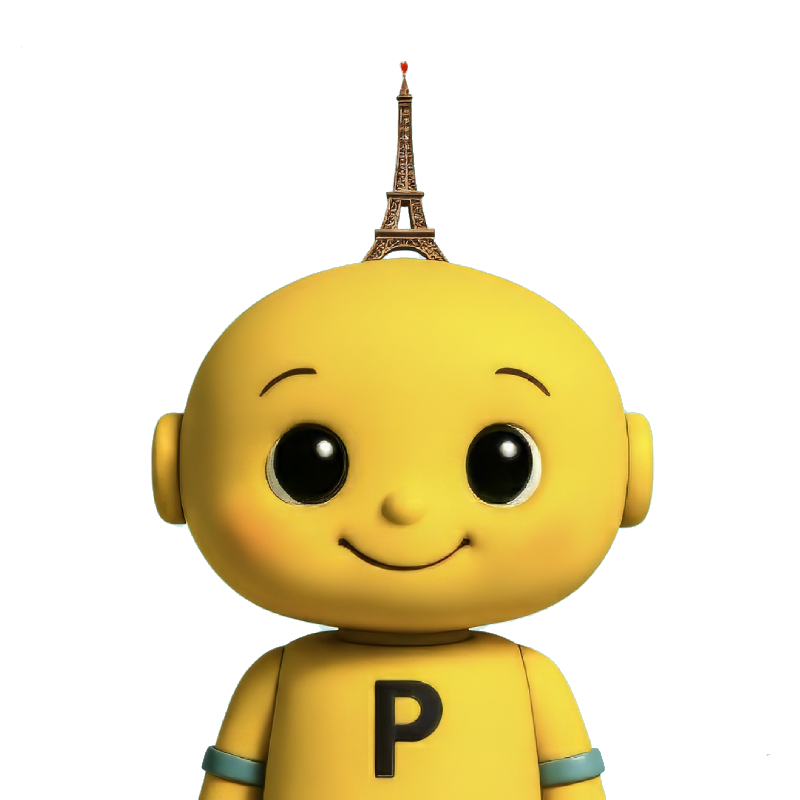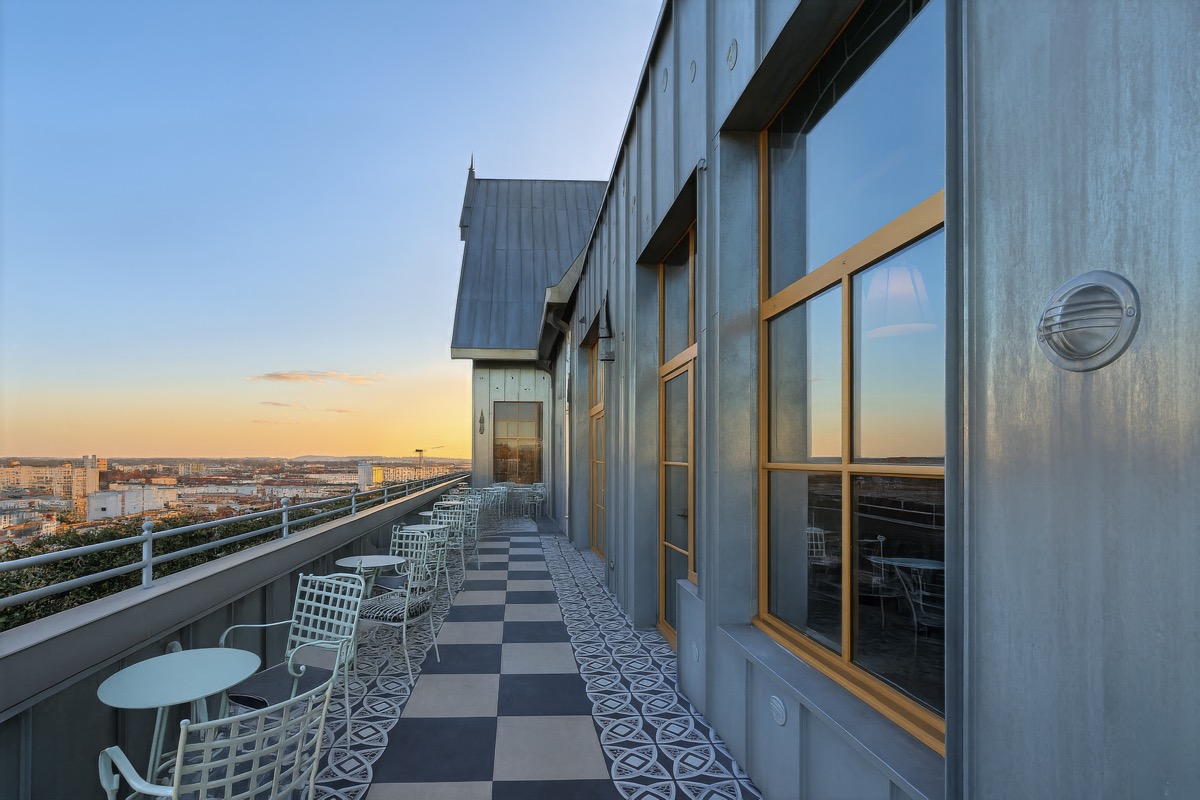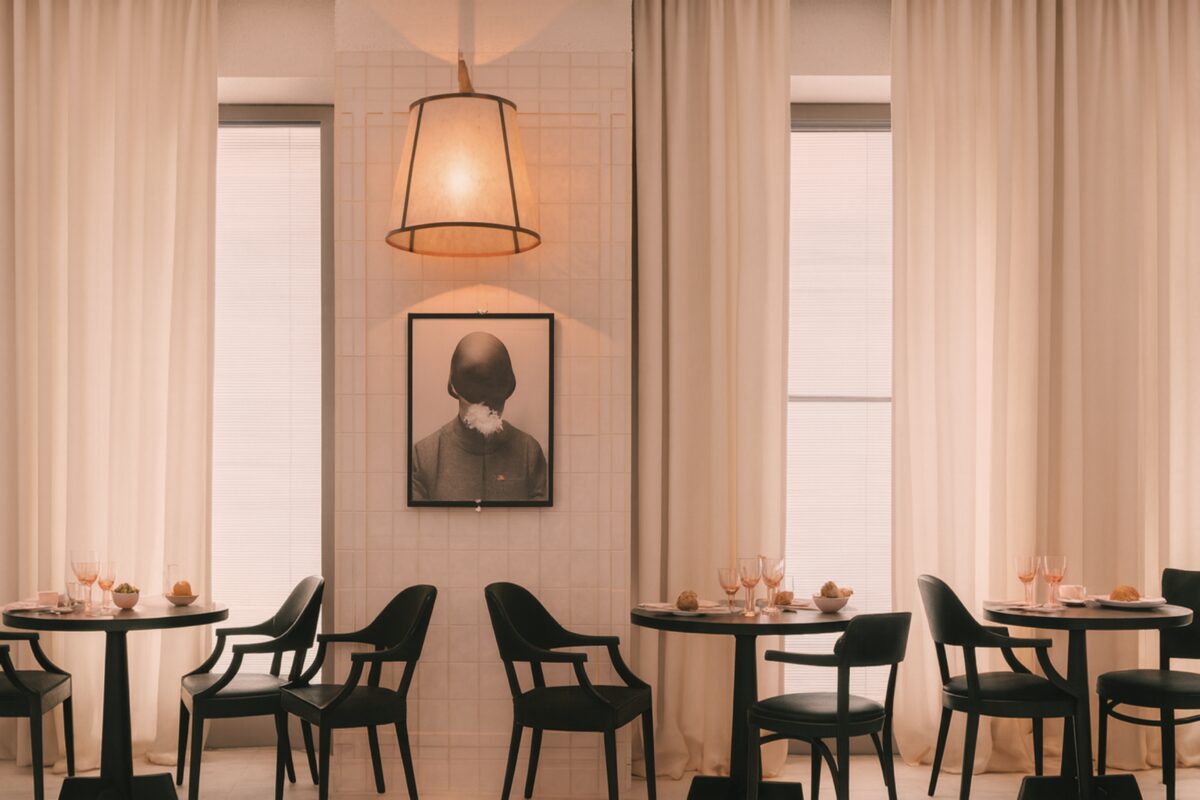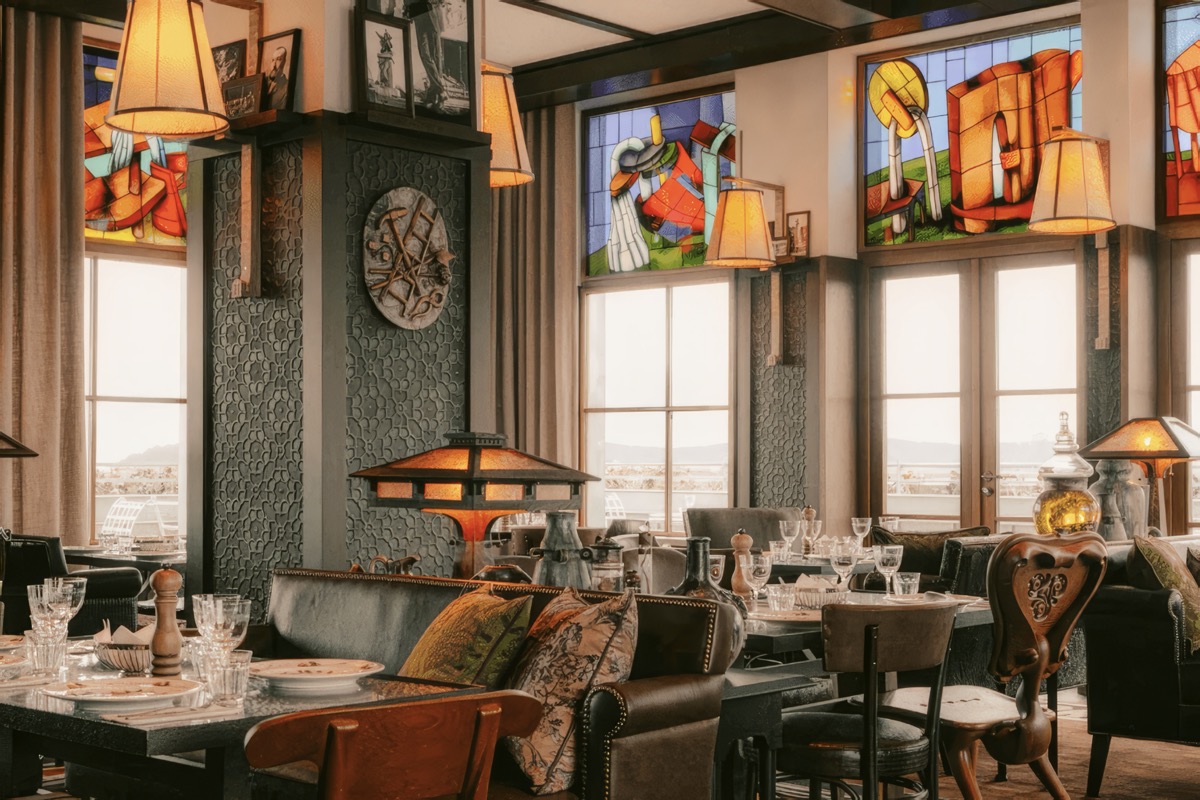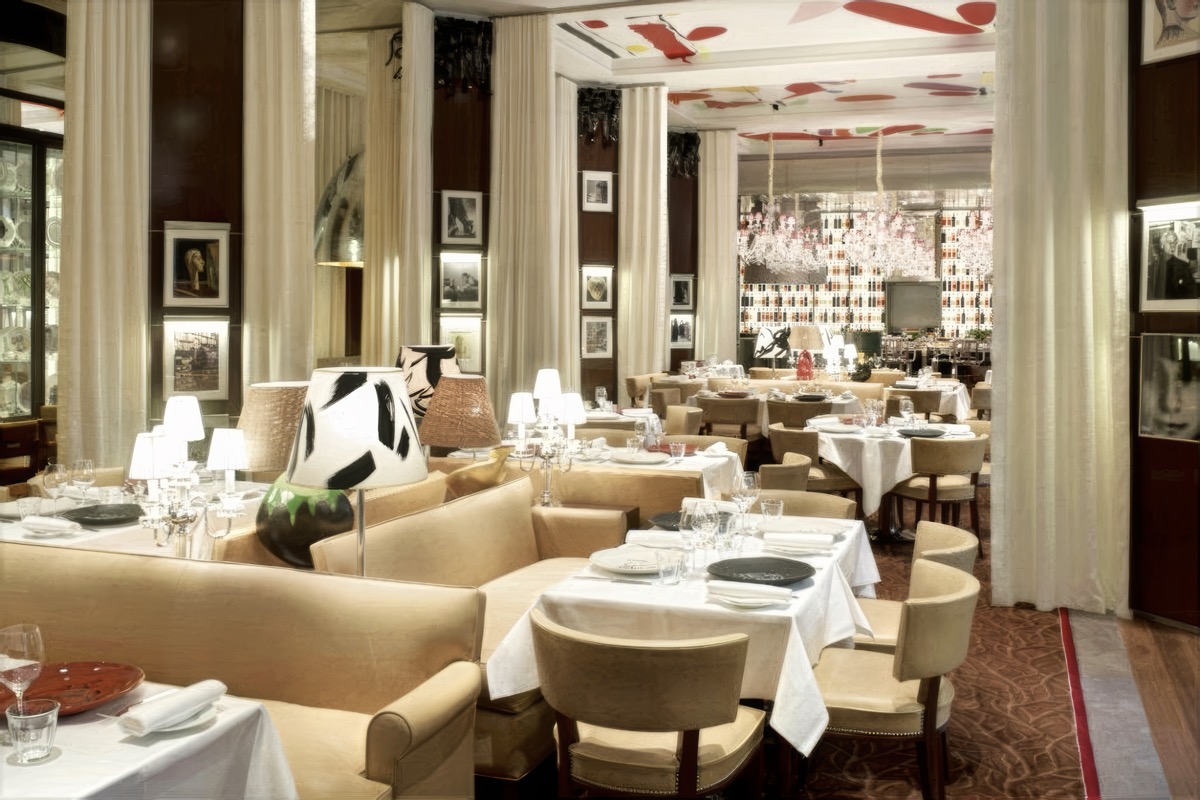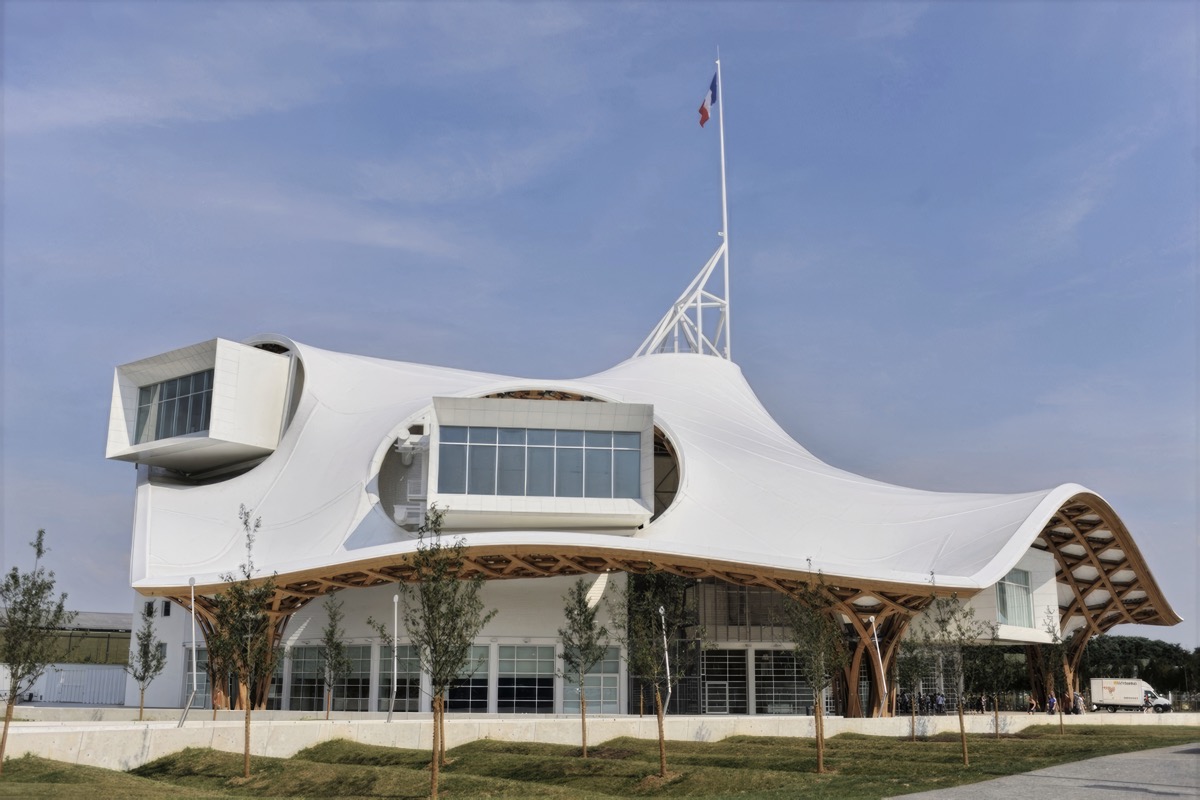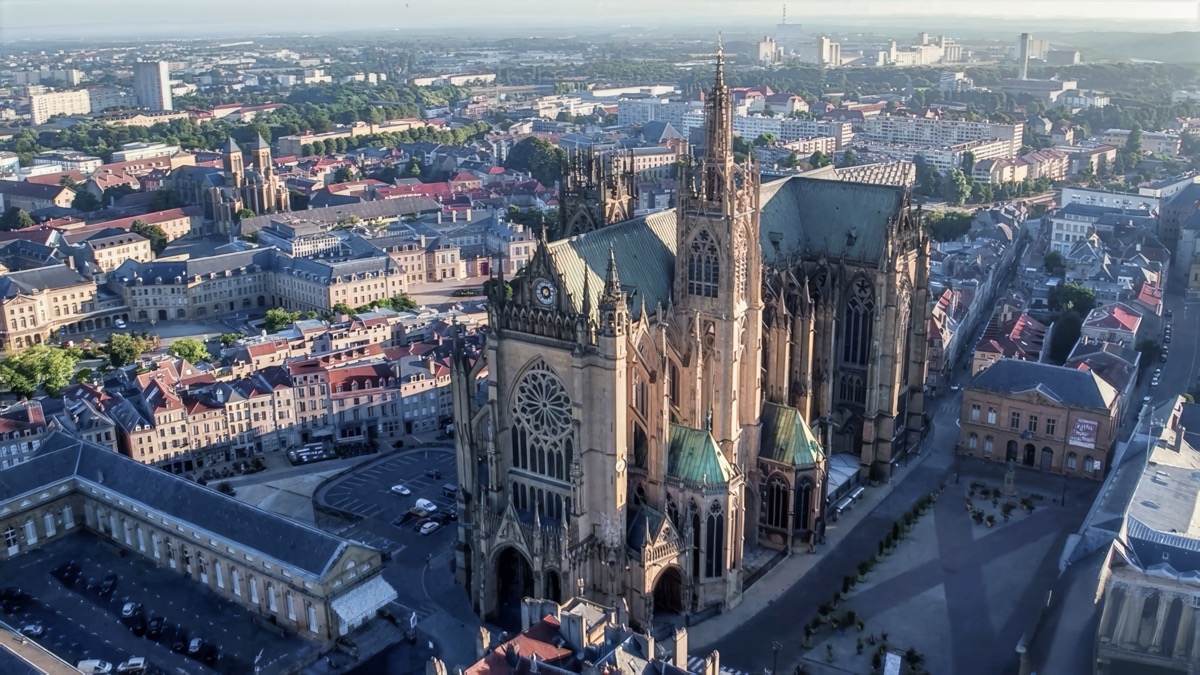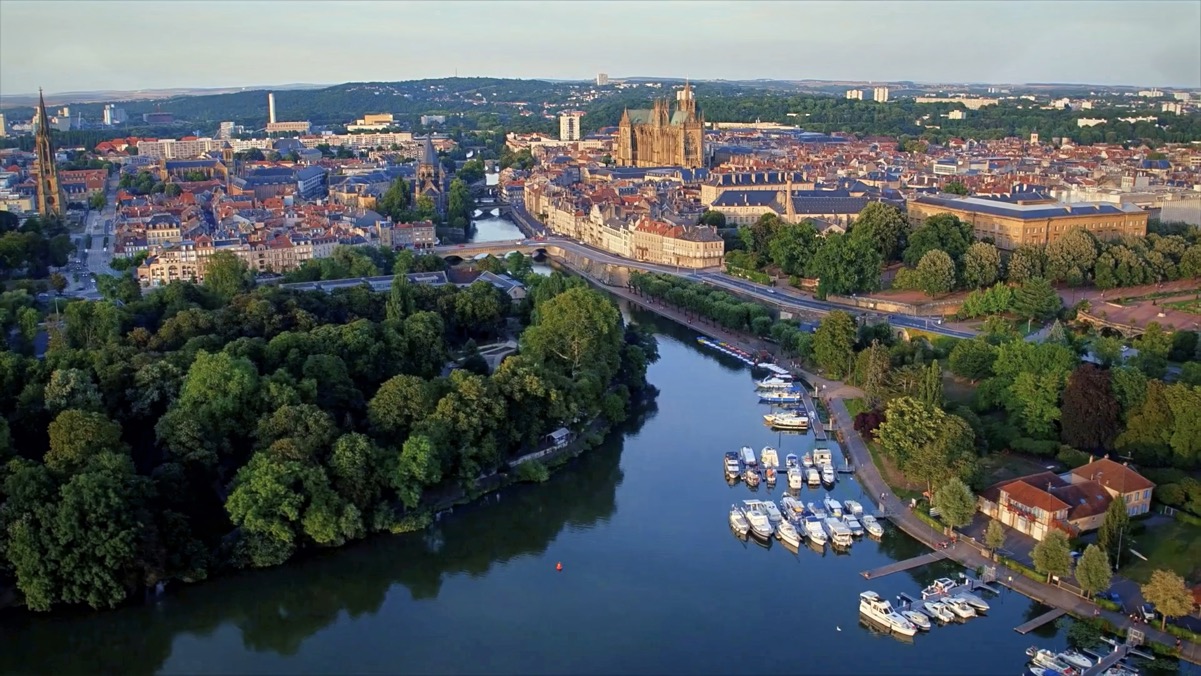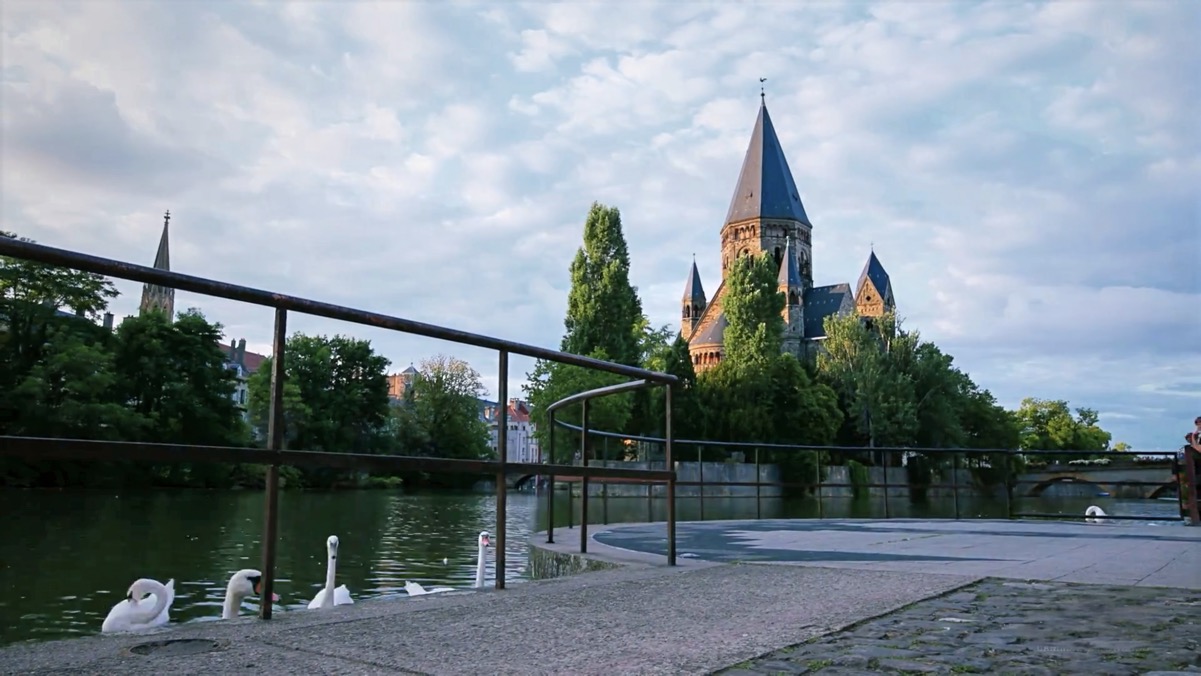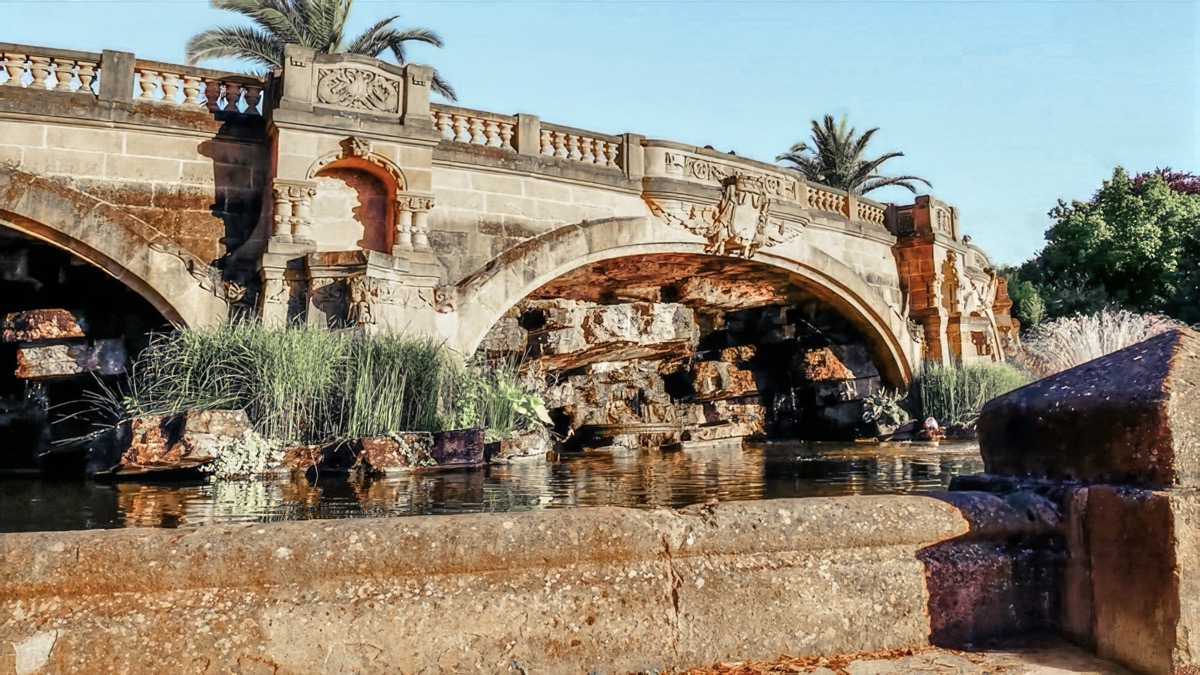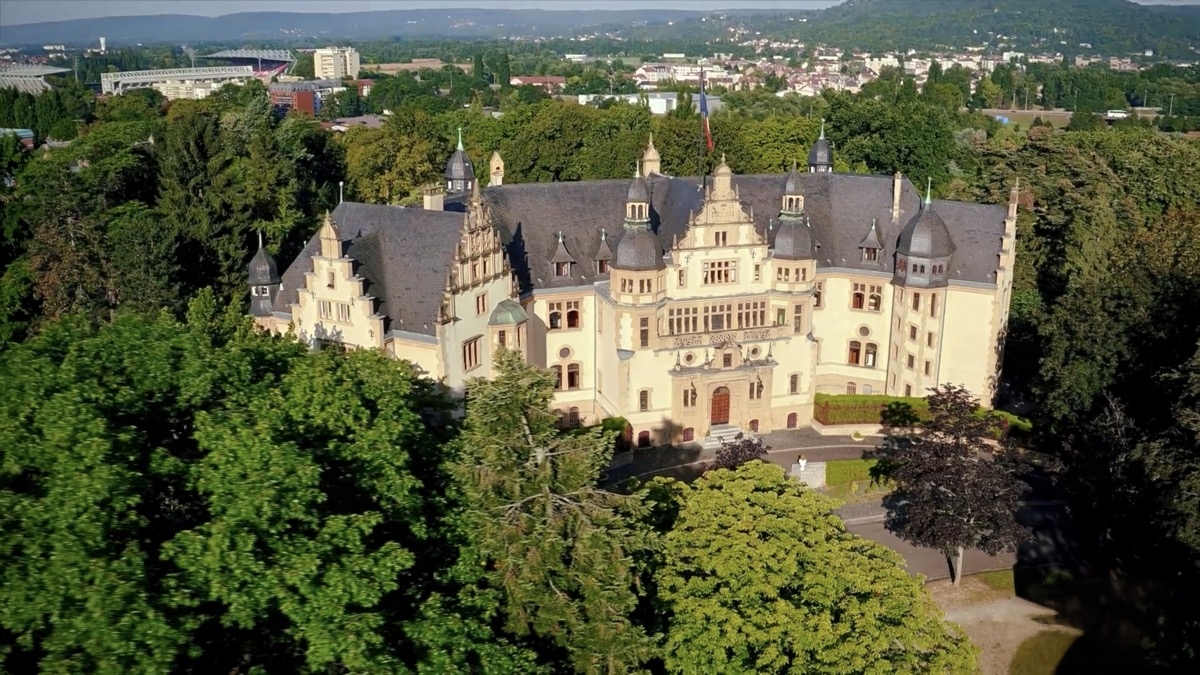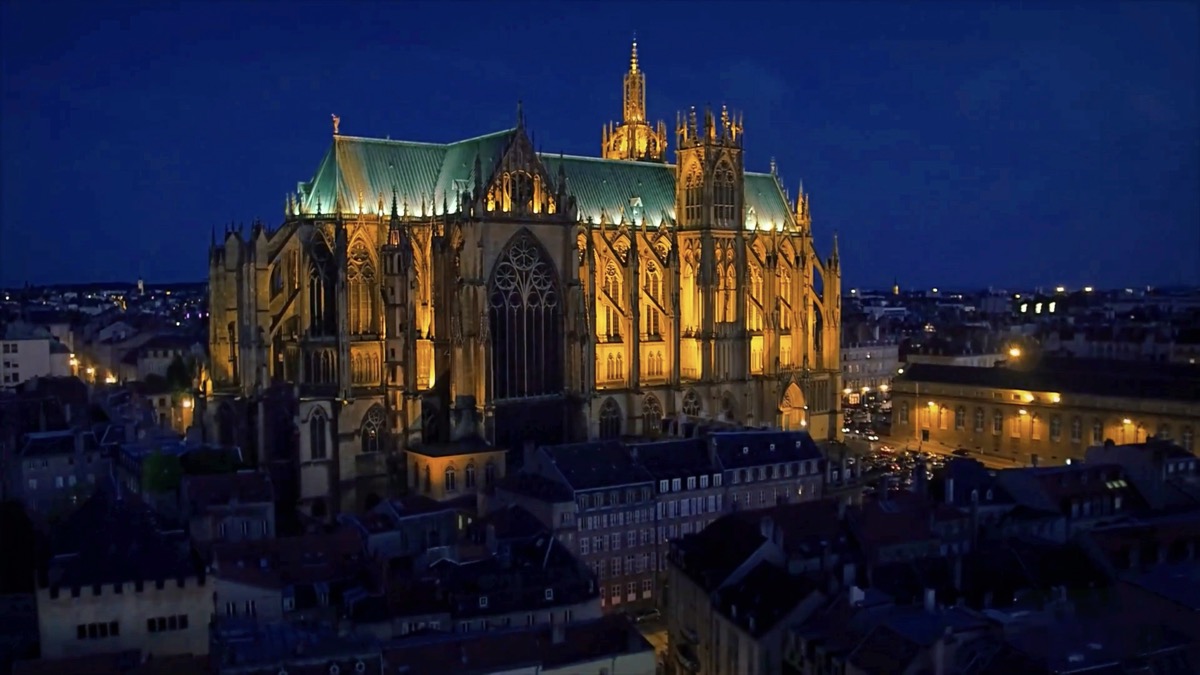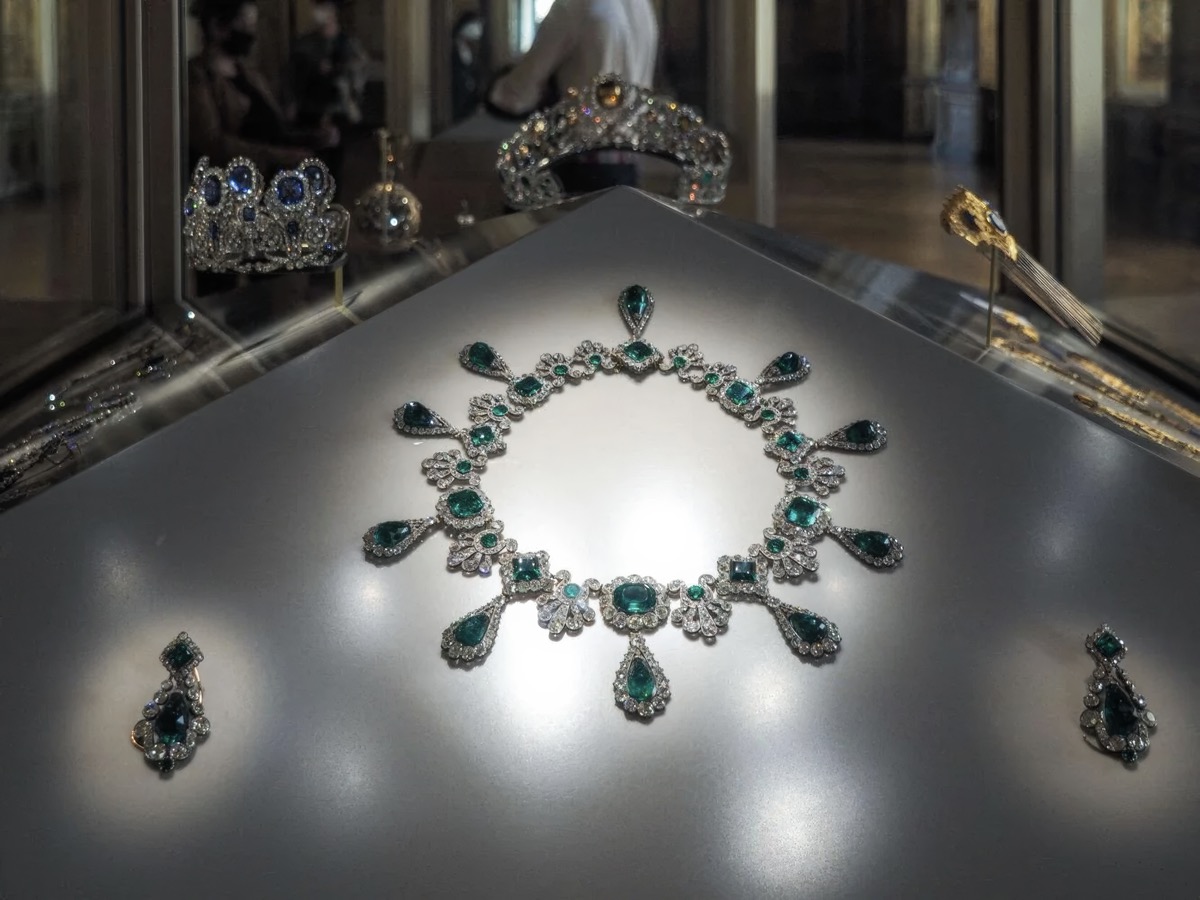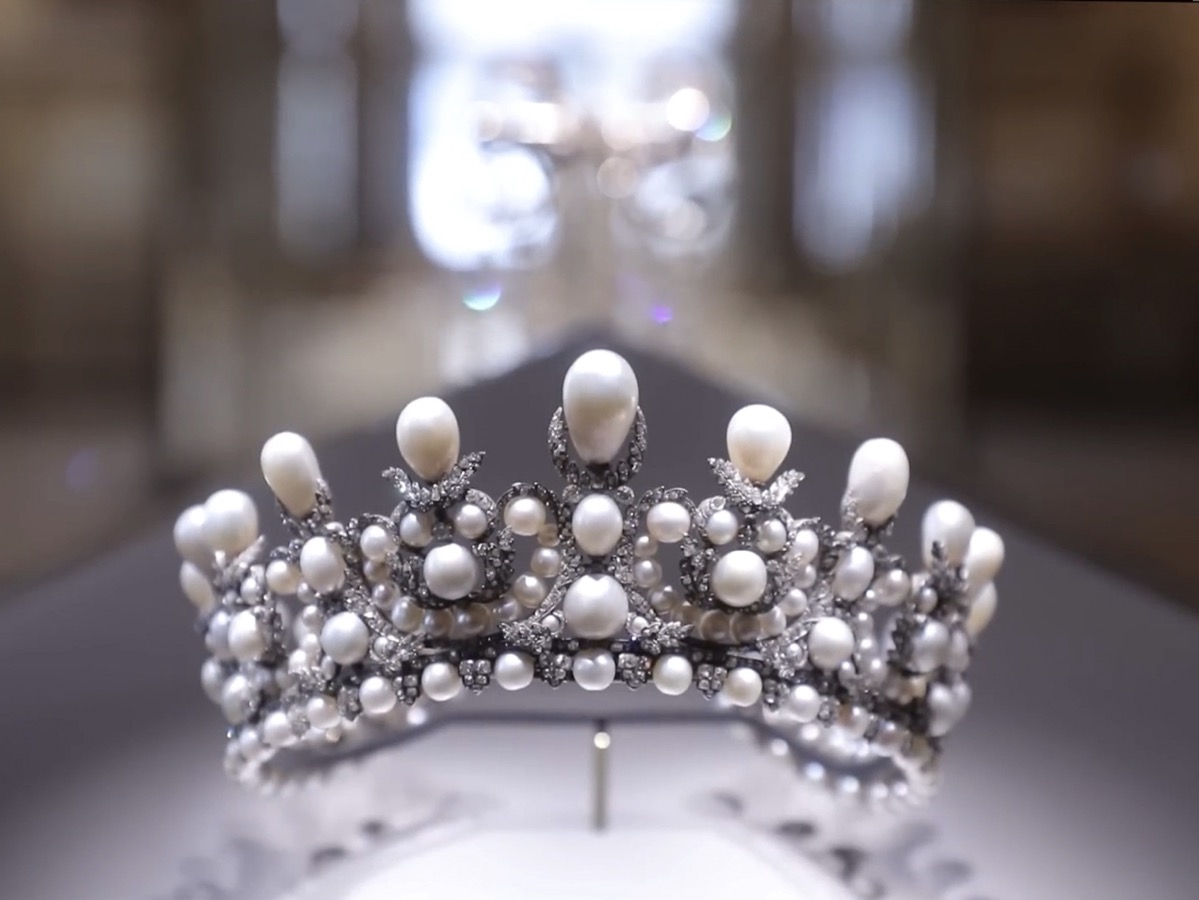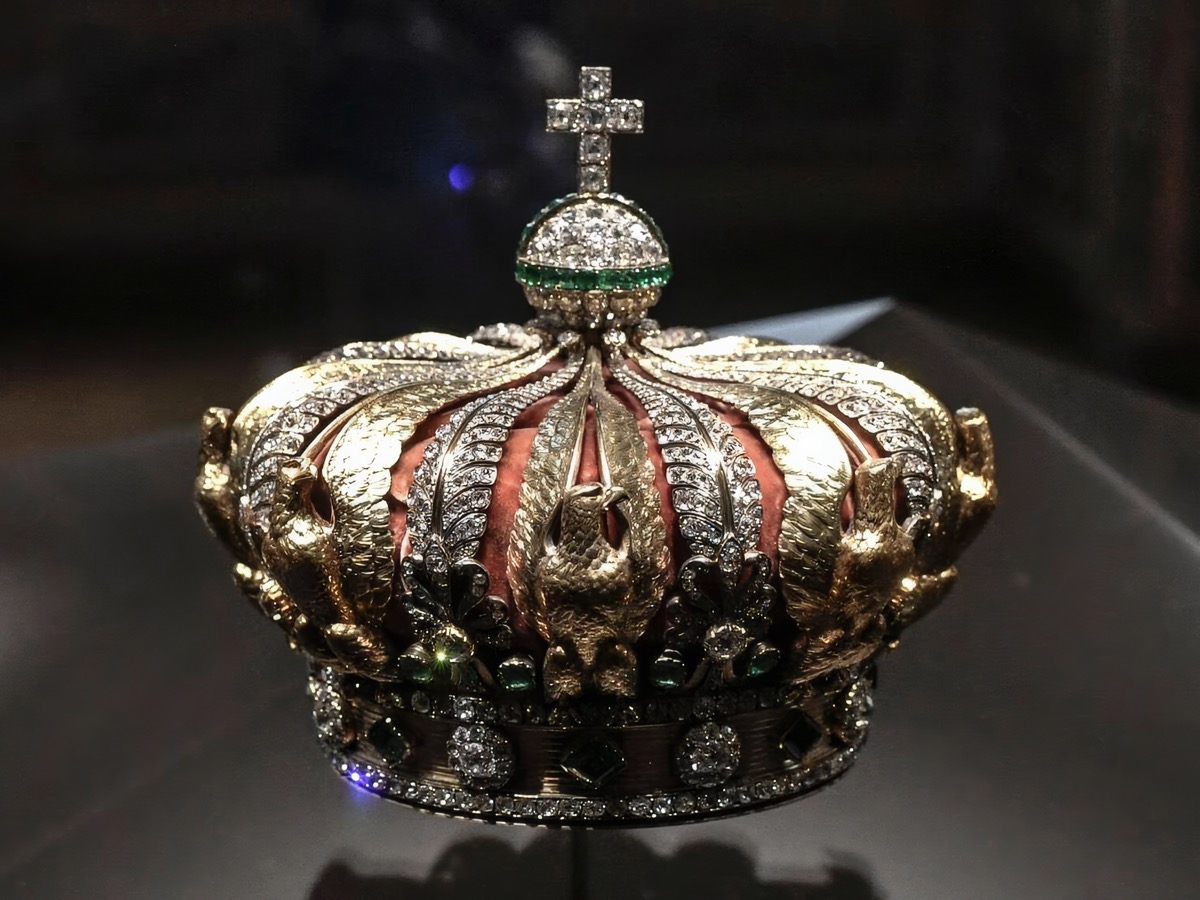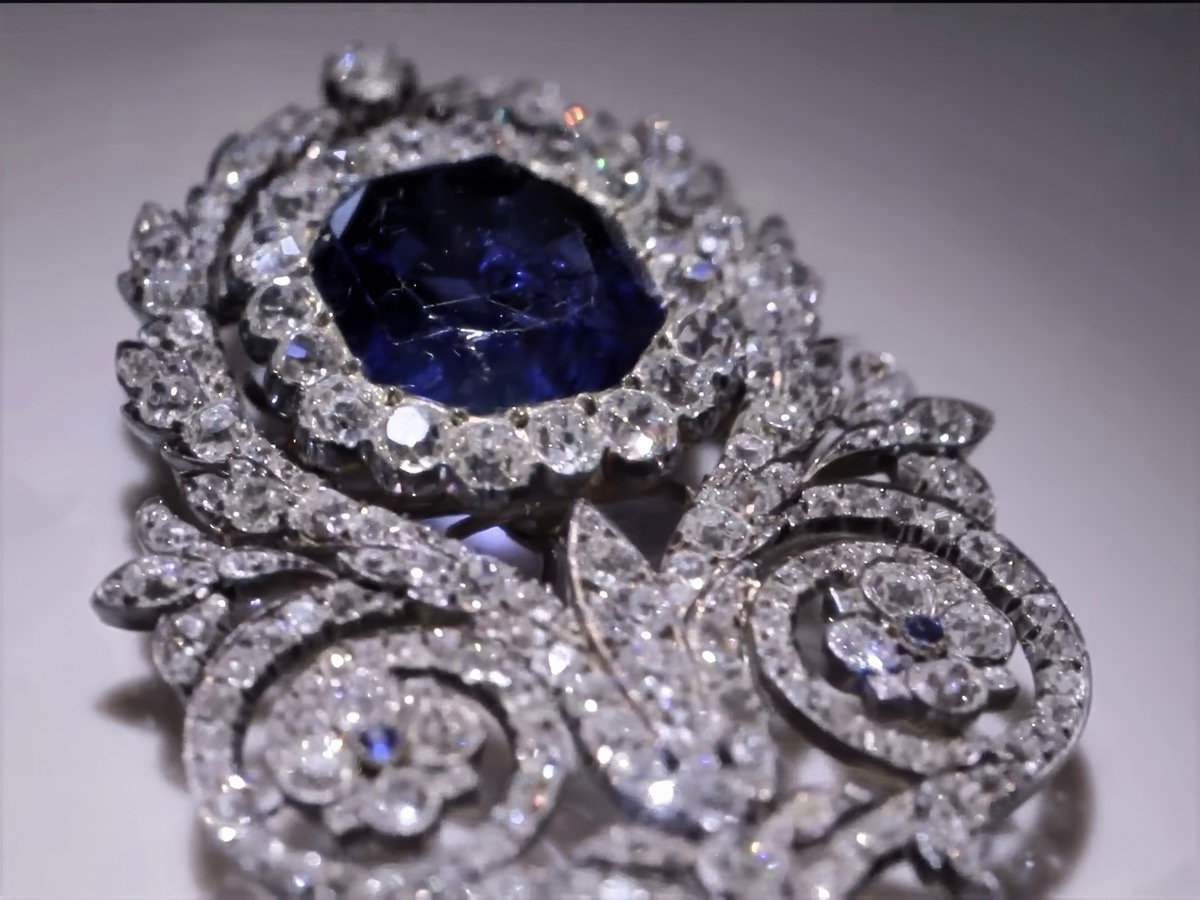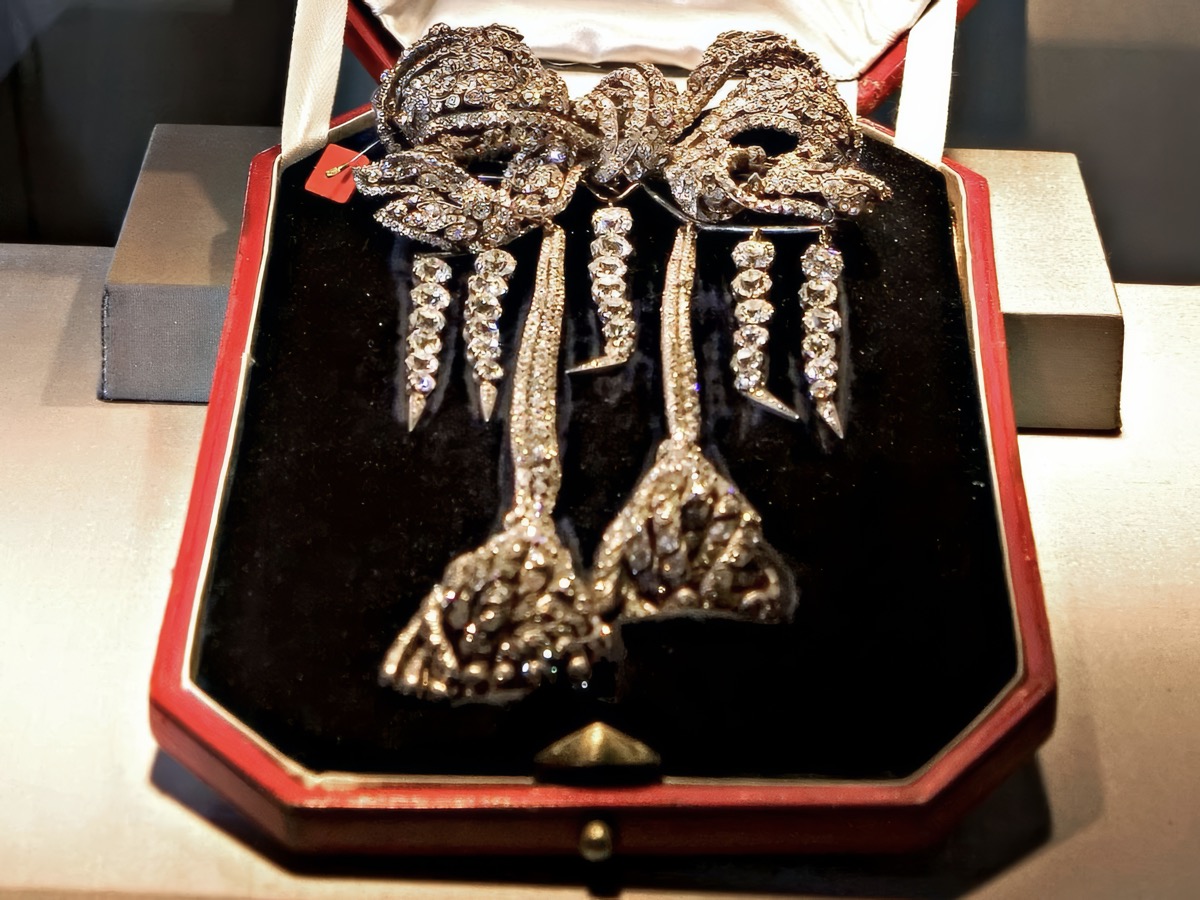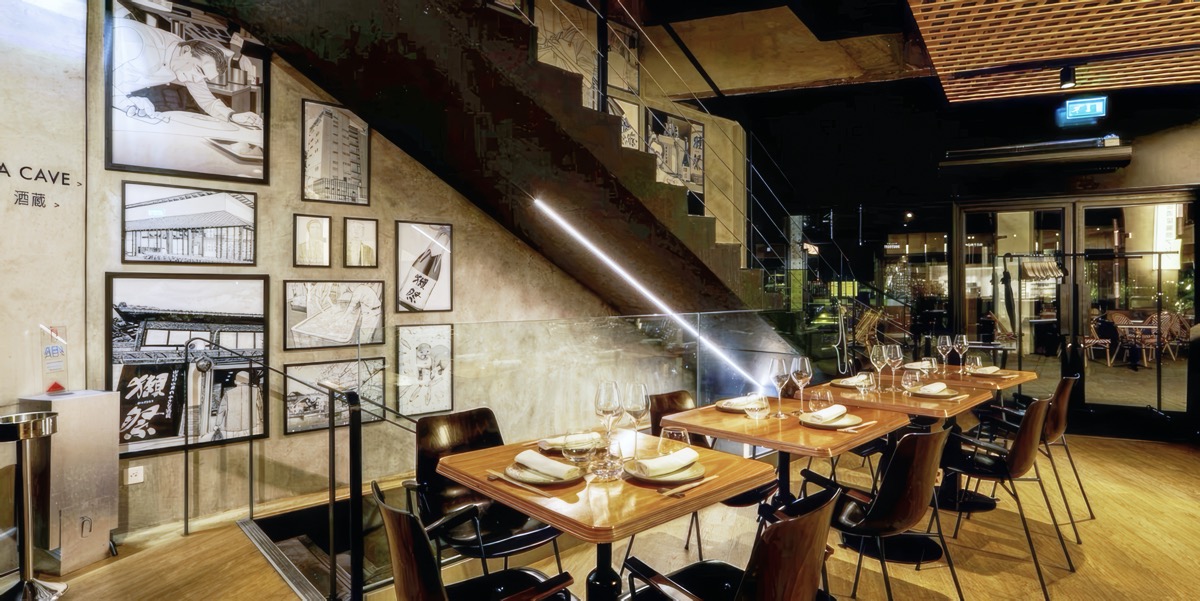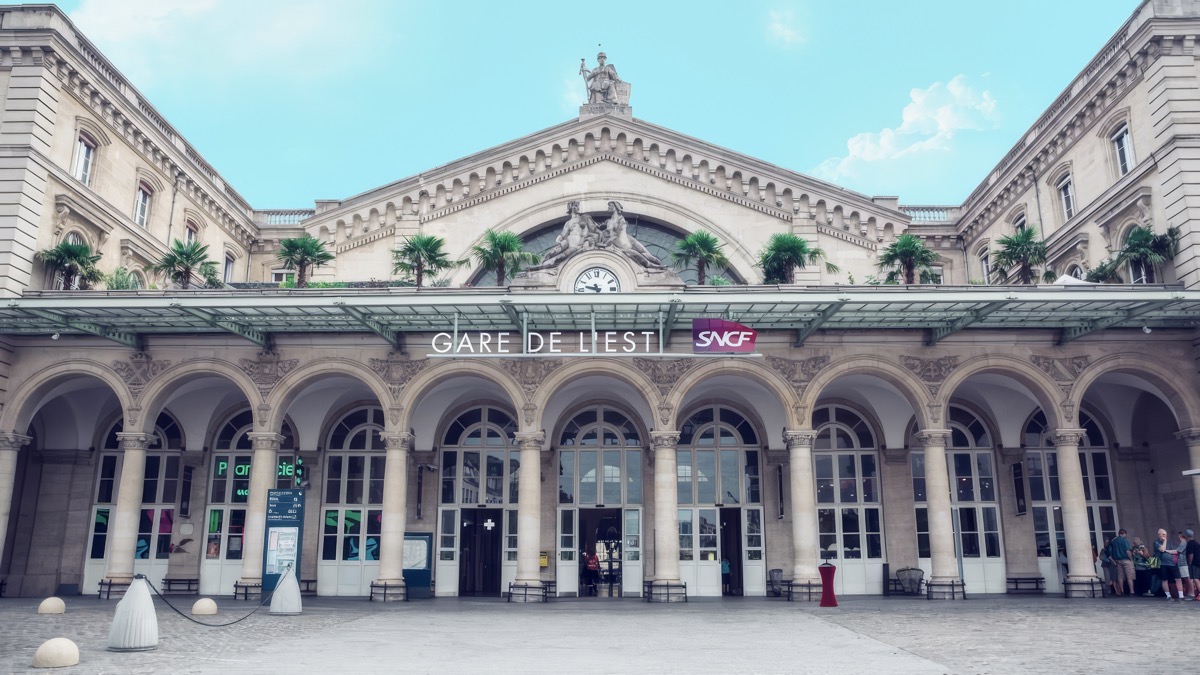AIの進化が加速するほど、私たちはひとつの問いに戻されます。「人間とは何か」という問いです。
人工知能が文章を書き、絵を描き、作曲を行い、さらには新薬を設計し、金融を制御する時代。AIはもはや人間の能力を補う存在ではなく、社会全体の“知の構造”そのものを組み替え始めています。しかし、AIの設計思想が偏れば、社会そのものも偏ります。
それゆえ今、世界のさまざまな場所で、「人間中心のAI」を模索する動きが始まっています。
南アフリカのバイオメディカルエンジニア、ペロノミ・モイロア(Pelonomi Moiloa)氏。
彼女が率いるスタートアップ「Lelapa AI」は、アフリカ諸国の多言語社会を支えるAIの開発を行っています。
Lelapaとは現地語のセツワナ語で「家族」や「共同体」を意味します。
その名のとおり、同社のAIは英語ではなく、ズールー語、ソト語、コサ語など、地域固有の言語を理解し、農業や医療、気候変動といった生活に直結する課題を支援します。
モイロア氏はこう語ります。
「アフリカのAIは、データではなく“声”から生まれるべきです。
私たちは、機械に人間の現実を教えるのではなく、人間の現実に寄り添うAIをつくりたいのです。」
この哲学の背景には、「ウブントゥ(Ubuntu)」という思想があります。「私は、他者がいるから私である」という、アフリカ南部の共同体倫理です。
AIを「効率の道具」としてではなく、共感と連帯の技術として設計しようとするこの試みは、欧米中心のAI開発とは対照的です。
テクノロジーが世界の差異を消していく時代に、Lelapa AIは、文化を守る技術の在り方を提示しています。
The register is quiet and deliberate. Structural concrete. Clean steel frames. Calm lighting that lets shadow do part of the shaping. Comfort sits ahead of spectacle. The weight of the duvet, the reach to a shelf, the exact height of the desk. Each choice feels tested by use rather than by sketch. Guest rooms run from the second to the eighth floor. Large windows frame precise portraits of the city and help settle your mood before you step out.
There is play as well. A cipher on the wall. A tiny carving in a cabinet. You may feel the tug of a small treasure hunt. Function never bows to design. It moves with it.
On the ground floor, La Cuisine de Rose reads like a love note written in pink. The room blushes from china to lighting. Chef Alexandre Mons threads one pink ingredient into every dish. It is an easy room to use from lunch into the evening, as relaxed as a friend’s kitchen with better glassware.
High above, La Maison de Manfred sets the table inside the house itself. The view sweeps Metz in one wide arc. At dusk the stained glass spills color onto neighboring facades and the city answers with lights. The menu speaks fluent tradition with a Starck accent. Familiar bones, unexpected turns. Finish on the roof with a signature cocktail and the pleasant feeling that you have reached a last paragraph.
Starck crosses borders lightly. He made transparency feel like a material with the Louis Ghost chair. He turned a lemon squeezer into sculpture. He tuned old-world hotels to a modern pitch without stripping their character. In Metz he gives architecture and narrative the same temperature and offers a new angle on the city. The hotel is still a machine for sleeping, eating, and idling, yet a fable moves through it. That coexistence is the house style.
Born in 1952 in the Paris suburb of Mantes-la-Jolie, Starck is France’s most recognizable industrial designer turned architect. In Japan he is widely known for the golden flourish on the Asahi headquarters in Asakusa. His range runs wide on purpose. Furniture and tableware. Interiors and buildings. Yachts and, yes, toilets. Light materials, a wink in the form, and a devotion to use give his work its steady rhythm. He prefers objects that improve daily gestures rather than objects that only call attention to themselves.
Signatures and Experiments
Over the decades Starck has left a trail of objects and places that behave like characters.
Louis Ghost chair, 2002. A transparent polycarbonate classic that turned invisibility into style.
Juicy Salif, 1990. A tripod lemon squeezer, more icon than tool yet perfectly at home on a counter.
Le Royal Monceau, Paris, circa 2010. A palatial hotel rewired for the present without losing its glamour.
Centre Pompidou-Metz, 2010. A sinuous, light-framed roof that shelters galleries like sails.
Aérotech toilet, 2005. Everyday porcelain sharpened by hygiene and line.
Taken together they show three recurring pursuits. Product as a small revolution. Space as an edit. The city as a conversation partner.
| Category | Work / Project | Year | Notes |
|---|---|---|---|
| Furniture / Product | Louis Ghost Chair | 2002 | Transparent polycarbonate chair with a ghostlike presence |
| Kitchenware | Juicy Salif Citrus Squeezer | 1990 | Iconic tripod silhouette that turned a tool into sculpture |
| Interior / Spatial Design | Renovation of Le Royal Monceau, Paris | circa 2010 | A historic palace reimagined with a contemporary edge |
| Architecture | Centre Pompidou-Metz | 2010 | Sweeping roofline and light structural expression |
| Everyday Object | Aérotech Toilet | 2005 | Light silhouette with a focus on hygiene and comfort |
Metz sits in Grand Est in the northeast of France, close to Germany and Luxembourg. It has long been a hinge between cultures and trade routes. From Paris it is about 320 kilometers, roughly ninety minutes by TGV. Strasbourg is about an hour by rail. The city pairs luminous history with contemporary art and works well as a day trip from the capital or as a quiet base for a weekend.
Begin with Cathédrale Saint-Étienne, a Gothic masterpiece whose stained glass has earned the nickname festival of light. Construction stretched from the thirteenth to the sixteenth century. Today medieval windows sit beside modern commissions. Roman traces thread the streets. You will find fragments of walls and the Pont des Roches. At the Porte des Allemands, a fortified bridge-gate, the city’s emblem doubles as a favorite camera perch.
The Centre Pompidou-Metz opened in 2010 and brings the collections and spirit of Paris’s modern art temple to the east under that memorable flowing roof. Exhibitions rotate with an international reach. Nearby, the Musée de la Cour d’Or gathers archaeology, decorative arts, and architecture to tell Lorraine’s long story from Rome to now.
Water, Green, and Quiet
Walk the promenades along the Moselle. The river mirrors the skyline and summer boats move at an idle. The Esplanade offers lawns and alleys where joggers and picnickers trade space. In the Jardin Botanique de Metz, four hectares stitch together plant life from around the world. It is an easy loop through the seasons.
Rates and Practicalities
Rooms generally start around €170 per night.
Address 31, rue Jacques Chirac, 57000 Metz, Amphithéâtre district
Telephone +33 3 56 63 16 31
Website: maisonhelermetz.com
The investigation advanced rapidly over the weekend. One suspect was detained at Charles de Gaulle Airport as he prepared to board a flight to Algeria. The other was ar◊rested in Seine-Saint-Denis, north of Paris, where he was reportedly planning to flee to Mali. Both men were already known to the police for previous robberies.
They are now in custody at the Brigade de Répression du Banditisme, the Paris police’s major crimes unit, where they can be held for up to ninety-six hours of questioning. Investigators believe the two suspects were part of a four-person team that carried out the heist. More than a hundred officers are working to trace the remaining accomplices.
Surveillance data reconstructs a minute-by-minute picture of what happened.
At around 9:30 a.m., four masked men arrived along the Quai François-Mitterrand, using two scooters and a truck equipped with an aerial work platform stolen only hours earlier. Wearing yellow vests and motorcycle helmets, they passed as museum contractors.
At 9:34:11, the first alarm “Alarm N13” was triggered as their grinder bit into the window’s steel frame. By 9:35, they had entered the gallery, targeting glass display cases housing 19th-century royal jewelry. Within seconds, vibration sensors set off additional alarms across the hall.
Two security guards approached but hesitated; they feared the intruders might be armed. The thieves continued smashing the vitrines and collecting the jewels into bags. At 9:38, they vanished the same way they came through the window, down the lift, and onto scooters waiting below. The entire operation lasted less than four minutes.
When police arrived, they found broken safety glass, dropped gemstones, and fragments of DNA. It was enough to suggest both care and panic: a heist executed with military precision, ending in a rushed escape.
| Time | Actions of the Suspects |
|---|---|
| Around 9:30 a.m., Sunday | Four suspects arrived on the Quai François-Mitterrand with two scooters and a truck equipped with an aerial platform. Wearing masks, they used the lift to reach the first-floor window of the Apollo Gallery. |
| 9:34 a.m. | Two of the men climbed to the first floor. |
| 9:34:11 a.m. | The grinder struck the Seine-side window, triggering the door and window alarm identified as Alarm 13. |
| 9:35 a.m. | Two intruders entered the gallery and began breaking display cases. At the same moment, a Louvre employee radioed the control room to report the intrusion. |
| 9:35:11 a.m. | The first display case alarm was triggered. |
| Around 9:35:20 a.m. | Nine seconds later, a second display case alarm sounded. Vibrations from the break-in caused additional alarms in nearby cases to activate. |
| Before 9:36 a.m. | Police received an emergency call reporting an ongoing robbery at the Louvre and requesting immediate intervention. |
| 9:36 a.m. | Control room staff activated the emergency alert system known as R@mses. Two guards in the gallery attempted to approach but quickly retreated, fearing the suspects were armed. The attackers continued breaking the display cases. |
| 9:37 a.m. | The museum’s theft-response protocol 33.33 was initiated, closing internal and visitor doors. One suspect in a yellow vest began removing jewels from a damaged case, while the other, wearing a helmet, struggled to smash another display. |
| 9:38 a.m. | Both men fled the gallery in haste. The helmeted suspect leapt headfirst into the lift without hesitation, while his accomplice in the yellow vest gathered fallen jewels from the floor. |
| After 9:38 a.m. | The two escaped through the same window they entered. Their time inside the gallery was under four minutes. They descended in the lift and fled on two scooters just seconds before police arrived. |
One piece: Empress Eugénie’s crown was later found discarded near the museum, slightly damaged but restorable.
Experts estimate the stolen collection at €88 million, but its real worth is immeasurable. These were not mere ornaments but artifacts of political history, embodying France’s identity and aesthetics through successive empires.
Days after the arrests, none of the stolen items have resurfaced. The list reads like a chapter from imperial France: sapphire tiaras, emerald necklaces, and diamond brooches once belonging to the Bonapartes and Bourbons.
| Jewels | Origin and History | Notes |
|---|---|---|
| Hortense de Beauharnais Sapphire Set | Daughter-in-law of Napoleon I and mother of Napoleon III. The stolen pieces include a sapphire tiara and matching earrings. | Sold to Queen Marie-Amélie for financial reasons and later repurchased by the Louvre. |
| Marie-Amélie Sapphire Necklace | Wife of King Louis-Philippe, known for her simplicity. She kept jewels primarily as family assets rather than ornaments. | One earring was reportedly dropped during the escape. |
| Marie-Louise Emerald Set | Created in 1810 for Napoleon I’s second wife by the imperial jeweler. These jewels were part of her private collection. | Not crown property; later acquired by the Louvre in 2004 after remaining with her family for generations. |
| Empress Eugénie’s Jewels | Wife of Napoleon III. The stolen items include a diamond tiara, the Grand Nœud de Corsage brooch, and the Reliquaire brooch set with 94 diamonds. | Empress Eugénie embodied the elegance of the Second Empire, wearing her jewels as symbols of imperial prestige. |
In the black market, fame is a curse. The stolen items are too distinctive, too documented to trade openly. Gemologists note that their craftsmanship and provenance make them instantly recognizable.
To launder such pieces, criminals would have to melt gold mounts or recut gemstones, a process known as recutting, effectively erasing centuries of history. Yet, even recut gems carry microscopic signatures: inclusions, color spectrums, and cut angles that act like a fingerprint.
Some stones, particularly those from long-closed Indian mines, can still be traced through these unique “DNA” traits.
Police fear, however, that the 200 pearls from Empress Eugénie’s tiara might already be circulating. Pearls, organic and difficult to identify once removed from their setting, are among the most liquid assets in the illicit gem trade.
The Louvre theft has reignited a debate far beyond art insurance and museum policy. It asks what happens when cultural artifacts, once state-owned and globally recognized, slip into the unregulated digital economy of darknet trading and cryptocurrency transactions.
French culture minister Rachida Dati defended the Louvre’s alarm system, which functioned correctly, but admitted to weaknesses in “external perimeter security.” The ease with which a work vehicle could park beside the museum without detection has sparked questions about surveillance gaps.
Since the heist, much of the Louvre’s jewelry collection has been transferred to the Banque de France, whose underground vaults, built between the World Wars to protect gold reserves, now double as secure storage for national treasures.
Yet Interior Minister Gérald Darmanin has opposed proposals to install a permanent police unit inside the Louvre, warning that excessive securitization risks undermining the museum’s openness. “We must protect culture without turning it into a fortress,” he said, an argument that reflects a broader European tension between safety and accessibility in public institutions.
The arrests were announced almost in real time, prompting frustration within the Paris Prosecutor’s Office. Officials complained that early leaks jeopardized ongoing operations.
The case underscores a challenge of the digital era: how to balance journalistic immediacy with investigative integrity. In an age when information spreads faster than justice, transparency itself becomes a vulnerability.
One week after the robbery, the Apollo Gallery’s broken window had become an attraction in its own right. Tourists gathered to photograph the crime scene, some joking that they were searching for “fallen diamonds.”
This irony, people turning a cultural loss into a spectacle, captures something profound about modern society’s relationship to heritage. The Louvre heist has not only exposed the limits of security but also the way culture is consumed: as content, not collective memory.
AI-powered cameras, facial recognition, and smart access systems have redefined museum security. Yet, as the Louvre incident shows, even the best algorithms cannot predict human ingenuity.
Technology evolves, but so does crime.
The heist has become more than an investigation, it is a case study at the intersection of art, data, and design. It asks how societies should defend the intangible: the shared legacy that defines civilization itself.
Protecting culture, it turns out, is not just a matter of locks and sensors. It is a reflection of what we choose to value, and how far we are willing to go to keep it safe.
AIの進化が加速するほど、私たちはひとつの問いに戻されます。「人間とは何か」という問いです。
人工知能が文章を書き、絵を描き、作曲を行い、さらには新薬を設計し、金融を制御する時代。AIはもはや人間の能力を補う存在ではなく、社会全体の“知の構造”そのものを組み替え始めています。しかし、AIの設計思想が偏れば、社会そのものも偏ります。
それゆえ今、世界のさまざまな場所で、「人間中心のAI」を模索する動きが始まっています。
人間中心のAIとは何か 文化と倫理がつくる未来の知性
人間を中心に戻すという挑戦
AIの進化が加速するほど、私たちはひとつの問いに戻されます。「人間とは何か」という問いです。
人工知能が文章を書き、絵を描き、作曲を行い、さらには新薬を設計し、金融を制御する時代。AIはもはや人間の能力を補う存在ではなく、社会全体の“知の構造”そのものを組み替え始めています。しかし、AIの設計思想が偏れば、社会そのものも偏ります。
それゆえ今、世界のさまざまな場所で、「人間中心のAI」を模索する動きが始まっています。
アフリカから始まる“ヒューマニストAI”
南アフリカのバイオメディカルエンジニア、ペロノミ・モイロア(Pelonomi Moiloa)氏。
彼女が率いるスタートアップ「Lelapa AI」は、アフリカ諸国の多言語社会を支えるAIの開発を行っています。
Lelapaとは現地語のセツワナ語で「家族」や「共同体」を意味します。
その名のとおり、同社のAIは英語ではなく、ズールー語、ソト語、コサ語など、地域固有の言語を理解し、農業や医療、気候変動といった生活に直結する課題を支援します。
モイロア氏はこう語ります。
「アフリカのAIは、データではなく“声”から生まれるべきです。
私たちは、機械に人間の現実を教えるのではなく、人間の現実に寄り添うAIをつくりたいのです。」
この哲学の背景には、「ウブントゥ(Ubuntu)」という思想があります。「私は、他者がいるから私である」という、アフリカ南部の共同体倫理です。
AIを「効率の道具」としてではなく、共感と連帯の技術として設計しようとするこの試みは、欧米中心のAI開発とは対照的です。
テクノロジーが世界の差異を消していく時代に、Lelapa AIは、文化を守る技術の在り方を提示しています。
フランスの研究機関(ENS)での討論|「AIの未来を選べるか」
2025年10月、フランスを代表する最高峰の教育・研究機関であるエコール・ノルマル・シュペリウール(ENS)では、思想誌『ル・グラン・コンチネン(Le Grand Continent)』による公開討論が開かれました。テーマは「私たちはAIの未来を選べるか」。
登壇者は、AI Now Institute共同創設者のメレディス・ウィッテカー(Meredith Whittaker)経済学者、2024年にノーベル経済学賞を受賞したダロン・アセモグル(Daron Acemoglu)経済学者、そして若手経済学者アントナン・ベルゴー(Antonin Bergeaud)氏ら。
彼らの共通の問題意識は、「AIが民主主義の構造そのものを変えてしまう危険性」にあります。
ウィッテカー氏はこう指摘します。
「AIは中立ではありません。“誰が設計したか”によって世界を再構築します。現在のAIは、少数の巨大企業による政治的プロジェクトなのです。」
実際、生成AIの訓練データやモデル設計は、アメリカや中国の企業に集中しています。
つまり、AIの“世界観”が、特定の文化圏によって形成されているのです。
アセモグル氏はこの構造を「知的植民地化」と呼び、民主主義が失うものをこう警告します。
「民主主義の力とは、“ゆっくり考える時間”にあります。しかしAI社会では、その時間が奪われつつあるのです。」
ベルゴー氏も同意します。
AIブームの背後には「実質的な生産性向上」よりも、「過剰投資による構造的バブル」があるというのです。
彼の言葉が印象的です。
「私たちはいま、技術ではなく速度に酔っている。」
AIがもたらす“効率”の先に、社会は本当に豊かになれるのか。この問いは、パリから世界に広がりつつあります。
超知能の時代に人間であり続けるために
AIの知能が人間を超える未来を前提とするなら、私たちは次の問いに答えなければなりません。「何をもって、人間と呼ぶのか」という問いです。
AIは計算し、予測し、創造する。しかしそれは、感情や死の意識を持たない知性です。
私たちの“人間性”とは、まさにその有限性から生まれるのではないでしょうか。
法学者でAI倫理研究者のルイーザ・ヤロフスキー氏はこう述べています。
「AIがどれほど知的であっても、それは“感じること”を知らない。だからこそ、人間はAIよりも深く、複雑なのです。」
つまり、人間の知性とは、答えを出す力ではなく、問いを持ち続ける力なのです。
この考えは、AIの「速度」への抵抗でもあります。
AIが“すぐに答えを出す”世界において、“ゆっくり考える”という行為そのものが、もはや人間の尊厳を守る最後の営みなのかもしれません。
AIと共に生きるという選択
AIはもはや止められない波です。しかし、その波の進む方向を決めるのは、技術ではなく人間です。
「AIが人間を超える」ことを恐れる必要はありません。重要なのは、「AIが何を学び、誰に仕えるか」を決める意思です。
AI時代のリーダーシップとは、最先端の知識を持つことではなく、人間の意味を手放さないことだと思います。
これからの時代に必要なのは、AIを崇拝することでも、拒絶することでもなく、共に生きるための設計思想です。それは技術ではなく、文化の問題。
AIは文明を試す鏡であり、私たちが「どんな人間でありたいか」を問うための道具なのです。
完結:AI革命の本質|超知能が問う「人間とは何か」
この3回シリーズは、AIを恐れるか受け入れるかという二元論ではなく、「AIをどう人間の側に引き戻すか」という視点で終わります
技術が変わっても、人間が問い続ける限り、未来は人の手にあります。
Amazonは2025年10月28日、コーポレート部門で約14,000人、全体の約4%にあたる人員を削減すると発表した。理由は、生成系AIやAIエージェントが定型的な業務を代替できるようになったためだという。
25年以上にわたり顧客体験の向上を目指して最先端のAI・機械学習モデルを開発・導入してきた巨大企業Amazonが、AIへの反感を招くような発表を自慢げにするのは失策だったのではないかと思う。
「人員を削減する」と言っても、今すぐに従業員を解雇すると言っているわけではない(最終的にはそうなるかもしれないけれど)。それでも、多くの人々が「AIに仕事を奪われるのではないか」という不安を募らせる結果になってしまっている。
ぼくは、人々が「やりたい仕事」をAIが奪うべきではないと思う。人々がやりたくない仕事や危険な仕事こそ、AIやロボットに任せるべきだ。
たとえば介護や建設、保安など、いわゆる「3K」と呼ばれる仕事に加えて、炎天下での交通整理や農作業など、気候的にも過酷な仕事がある。こうした肉体的・精神的な厳しさに比較して報酬が見合わない職種から、AI+ロボットに任せていくべきだと思う。
「AIのおかげで楽になった」、「もっと多くのことでAIに助けてほしい」と人々が感じられるようになれば、AIと人間の共生はもっと健全で前向きなものになるはずだ。
特に人手不足で、移民を受け入れなければ成り立たないような仕事については、政府が移民ビザの是非を議論する前に、まずAIとロボットで解決できないかを考えるべきだ。
たとえば介護職。肉体的に厳しい仕事が多すぎて、入居者一人ひとりに寄り添う余裕が職員にない。そのため、放っておかれる高齢者が多いのは日本もフランスも同じだ。職員による入居者への暴力事件も後を絶たず、「人間同士の触れ合いが大切だ」なんて理想を言っていられない現実がある。
病院も同様だ。看護師さんたちは忙しすぎて、患者の話にいちいち耳を傾ける余裕なんてない。けれど、痛いときやつらいとき、不安なときに、誰かに話を聞いてもらったり、安心できる言葉をかけてもらうだけで心や体の辛さが軽くなることがある。
そんなときこそ、対話型AIの出番だ。愚痴や症状を根気よく聞き、慰めてくれ、必要だと判断したときだけ看護師や医師を呼んでくれる。そんな存在が24時間そばにいてくれたら、患者はどんなにか安心できるだろうし、医師や看護師も余計な負担から解放されるだろう。
ぼく自身にも経験がある。入院中、看護師さんたちが忙しすぎて、ナースコールを押すのをためらってしまったり、痛くても誰にも言えずに心細く感じたことがある。
フランスの病院は特に人手不足が深刻で、ナースコールをしても来てくれないか、来ても数時間後で、しかも不機嫌な対応ということも珍しくない。
看護師になったばかりの頃は“白衣の天使”でも、忙殺されているうちに相手の気持ちを考える余裕なんてなくなってしまうんだろう、それくらい忙しい。
以前、フランスではルーマニアと提携して「看護師専門の移民プログラム」を作り、数多くのルーマニアからの移民がフランスの病院で働いていた。
病院の寮に住み、昼は看護助手として勤務、夜はフランス語の授業や看護学校に通うという仕組みで、仕事を探す必要がなく、無料でフランス語を習得し看護師資格も取れる。お金のない移民にとってはすごくいい話だよね。でも現実は理想通りに行かなかった。
昼は仕事で夜は学校なんて、いくら若い子たちでも体がついていかない。点滴を打ちながら、こっくりこっくりと居眠りを始める看護助手もいた。本来なら資格がないと注射や投薬はできないが、人が足りないためそんなことは言っていられない。文句など言ったら、次から注射も薬も来なくなるだけだ。
なにより怖かったのは、フランス語も英語も殆ど通じないことだった。夜間学校で学ぶといってもすぐに外国語で仕事ができるようになるわけじゃない。たぶん疲れて授業中に寝てしまうことも多いだろう。食事の配膳などは、身振り手振りで会話して楽しかった思い出もあるけど、ナースコールや点滴などで看護助手が来たりすると、正直恐怖だった。
実際、ぼくはペニシリンアレルギーがあるのに、ルーマニアから来たばかりの看護助手の女の子がカルテに書かれた「ペニシリンアレルギー」という単語を読めなかったばかりに、誤ってペニシリンの注射を打たれ、意識を失ったことがある。アナフィラキシーだった。
それでも病院側の過失にはならない。入院時に「すべて自己責任であり訴えません」と書かれた契約書にサインさせられているからだ。
そして、看護師になりたくて移民になったわけではないから、数年働いて正規ビザを得ると、病院を辞めてより楽で収入の良い仕事に転職してしまう。
結局病院は更なる人手不足に陥っているし、フランスの若者が就きたい仕事が、より安く働いてくれる移民に奪われる結果になっただけだった。政府も制度を作ったときはそこまで想定していなかったのだろうが、このような失敗は医療ミスだけでなく、移民問題にもつながる。もっと慎重に考えるべきだったと思う。もしあの時対話型AIが間に入ってくれていたら、AIは多言語対応だから、「ペニシリン」という単語もルーマニア語やフランス語で正確に伝えてくれただろう。というか、24時間いつでも来てくれて、どこがどう痛いですか?と聞いてくれたり、データを取って調べてくれたりする。そのうえ点滴してくれたり体を拭いてくれたり、配膳してくれたりするAIロボットがいたらもうそれで良くないか?医師や看護師は診察や手術に専念でき、医療ミスも減るだろう。そうした現場からAIやロボットの導入を始め、人々に感謝される存在として信頼を築いていけば、今のようなAIへの不信や反発は、もっと少なかったのではないか。今、AIに人間の仕事をさせるとしたらそれは、人間ができる業務を代替できるかどうかではなく、AIならではの能力を活かして人間にとって困難な仕事を代替できるかどうかで決めるべきだと思う。災害や戦争の復興支援計画と実行、地雷の発見・撤去など、求められる現場はいくらでもあるはずだ。
